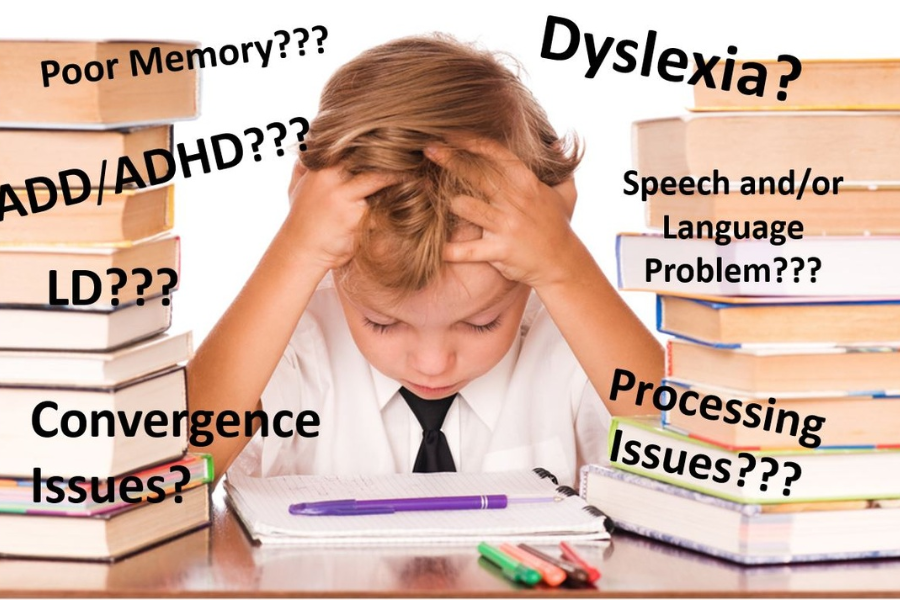Learning Disability Management

Source: classful
Learning Disability Management
Learning Disability Management is a critical part of current educational approaches, focused on accepting and efficiently supporting learners with learning disabilities. This profession is not just about recognizing challenges, but also about creating personalized solutions that empower these students.
In the developing landscape of tutoring, Learning Disability Management plays an essential role in ensuring that every learner has access to the tools and methods they require to progress academically and socially. By concentrating on Learning Disability Management, teachers and parents can nurture an inclusive happy atmosphere that rejoices variety of learning styles and supports every child to reach their fullest potential.
Table of Content
- What are the various learning disability management strategies?
- What are the various learning disability teaching strategies?
- What are the various reading strategies for learning disabilities?
- What are the strategies for teaching writing to students with learning disabilities?
- What are the benefits of doing learning disability courses online?

Source: ctfassets
What are the various learning disability management strategies?
Learning disability management has changed significantly, with innovative approaches being implemented to aid learners who face these difficulties. At the heart of effective learning disability management is the understanding that each learner is different, and therefore, a variety of approaches is required to meet various requirements.
One of the important approaches in learning disability management is the Multiple Senses Approach. This technique influences the significance of using multiple sensory contributions – auditory, graphic, and kinaesthetic – to improve learning and make sure that every child gets to learn in a manner that you
For instance
- Auditory Learning: Using songs or rhythms to teach concepts.
- Visual Learning: Incorporating diagrams, videos, and colorful charts.
- Kinaesthetic Learning: Engaging in hands-on activities or physical movement to understand new ideas.
An additional keystone of learning disability management is the use of assistive skills. These skills are aimed to help and enhance the learning practices of learners with incapacities.
Usually used assistive skills include
- Text-to-Speech Software: This allows students to hear written text read aloud, aiding those with reading difficulties.
- Speech-to-Text Software: Beneficial for students who struggle with writing, this software converts spoken words into text.
- Graphic Organizers: Digital tools that help in visually organizing and structuring information.
- Audio Books and E-Books: Providing alternative ways to access written materials.
Moreover, these, modified learning plans are an important aspect of learning disability management. Modifying the educational understanding of each student’s strengths and weaknesses makes sure more effective and complete method.
This could include
- One-on-one tutoring sessions.
- Modified assignments and assessments.
- Providing extra time for certain tasks.
Overall, learning disability management is about generating a helpful, flexible, and adaptive educational atmosphere. By accepting these approaches, teachers can knowingly enhance the academic consequences and overall well-being of learners with learning disabilities.
Plan Your next step with VES. Dial +919321024137 / +919869866277.
Don’t miss our Learning Disability Course brochure – Download Now.
What are the various learning disability teaching strategies?
Learning disability teaching strategies are key tools in the educational toolbox, helping to connect the gap for students who learn inversely. These approaches are not just about adapting to the challenges, but they are about updating the educational practice into a more accessible and effective journey for students with learning disabilities.
One of the key learning disability teaching strategies is the use of prompts. Prompts are memory assistance, often in the form of acronyms or phrases, which make learning and recalling compound information much easier for students with learning disabilities. By correlating information with a prompt, students can better recall and reclaim information.
Another effective method among learning disability teaching strategies is shaping your lesson in a structured and expectable way. This includes breaking down lessons into smaller, more convenient segments, allowing students with learning disabilities to process Knowledge in chunks. This structured method also contains clear and brief instructions, ensuring that students are not overcome by too much knowledge at once.
Here are a few other learning disability education approaches that may create a significant difference:
Incorporate Graphic Organizers
Graphic organizers are visual tools that help in organizing and outlining information. Organizers are generally useful for learners with learning incapacities as they deliver a strong assembly for thinking and writing.
Provide Opportunities for Peer Tutoring
Peer tutoring can be a mutually beneficial learning experience. It permits students with learning disabilities to get support from their associates, often making the learning process more relevant and less threatening.
Use Technology Aids
Technology can be a powerful ally in learning disability teaching strategies. Tools like text-to-speech and speech-to-text software may support reading and writing jobs, making them handier to learners with learning incapacities.
Offer Multi-Sensory Learning Experiences
Engaging multiple senses can greatly aid in learning. Activities that combine visual, auditory, and physical elements can be mainly effective for children with different learning styles.
Implementing these learning disability teaching strategies involves patience, understanding, and creativity. These learning disability teaching strategies help make learning stress-free for children with learning disabilities making their unique learning needs easy to achieve

Source: istockphoto
Your next step with VES? Dial +919321024137 / +919869866277.
Don’t miss our Learning Disability Course brochure – Download Now.
What are the various reading strategies for learning disabilities?
Reading strategies for learning disabilities play an essential role in Learning Disability Management. These strategies are structured to direct the unique difficulties faced by learners with disabilities, assisting them in decoding, understanding, and enjoying written resources. Operative reading approaches for learning incapacities are not one-size-fits-all; they must be organized to each beginner’s specific needs.
Here, we discuss some of these approaches, with a special aim on how phonics can be a life-changing tool in this aspect.
Multi-Sensory Reading Methods
Multi-sensory approaches involve more than one intellect at a time, supporting in deeper processing and recalling of info. This may include reading aloud, using physical mail for touch, and graphic assistance for opinion.
Phonics-Based Instruction
- Phonics plays a pivotal role in Learning Disability Management, particularly for those with dyslexia. It includes teaching reading by combining sounds with letters or groups of letters.
- Phonics-based instruction enhances a learner’s ability to decode words, making reading a more accessible and enjoyable experience.
Structured Literacy Programs
- Structured literacy is a comprehensive approach that includes phonemic awareness, phonics, fluency, vocabulary, and comprehension strategies.
- It is particularly effective as part of reading strategies for learning disabilities, offering a clear, systematic, and cumulative framework that builds on learners’ skills over time.
Graphic Organizers
Graphic organizers help in shaping thoughts and imagining the connections between ideas in the text, which is especially helpful for those with learning disabilities.
Guided Reading Sessions
In guided reading sessions, educators provide huge support, helping students through difficult texts and teaching them strategies to advance their reading skills.
Repeated Reading
Repeated reading of texts can improve fluency and comprehension. This technique is regularly used in reading approaches for learning incapacities to shape confidence and ability.
Vocabulary Instruction
Explicit vocabulary guidelines support students in accepting and learning new words, which is important for reading capability.
Merging these reading approaches for learning incapacities into everyday learning can significantly improve a student’s reading abilities. Through Learning Disability Management, educators can provide learners with the tools they need to overcome their challenges and thrive in their academic years.
Your next step with VES? Dial +919321024137 / +919869866277.
Don’t miss our Learning Disability Course brochure – Download Now.
What are the strategies for teaching writing to students with learning disabilities?
Training learners with learning disabilities for writing is a gentle process that needs a blend of endurance, understanding, and specialized approaches. When educators use the right techniques, they can successfully guide these students through the details of writing, turning a potential challenge into a worthwhile academic journey. Here are some strategies for teaching writing to students with learning disabilities, focusing on both the writing process and the vigorous pre-writing activities.

Source: kashmirconvener
Understanding Individual Needs
Each student’s learning disability is varied which makes it essential to formulate specific lesson plans in teaching writing to students with learning disabilities. By understanding individual challenges, educators can structure their teaching methods consequently.
Pre-Writing Activities
Brainstorming
Boost students to brainstorm ideas through discussion or visual supports. This helps in shaping their thoughts before they begin writing.
Graphic Organizers
Use tools like mind maps or flowcharts. These visual aids assist students in structuring their ideas coherently.
Easy Writing Steps
Introduce writing by breaking the entire process into easy manageable steps which they can understand faster and implement faster.
This can include
Planning
Guide them in planning their writing, discussing the beginning, middle, and end of their stories or essays.
Drafting
Encourage them to write their initial draft without worrying about spelling or grammar. This helps in exploring their thought process and have them in real black and white on paper.
Revising
Teach them to review their work, focusing on the flow of ideas and coherence.
Editing
Finally, guide them through correcting spelling and grammatical errors.
Incorporating Technology in daily learning
Using technology can always come in handy and ease a lot of difficulties encountered by children while learning to writing for children with learning disabilities. These tools can help students focus more on their ideas and less on the method of writing.
Regular Feedback
Provide productive feedback throughout the writing process. This should be specific, positive, and aimed at guiding them toward improvement.
Encouraging Practice
Consistent practice is key in learning disability management. Encourage students to write regularly, providing different and interesting writing prompts to keep them engaged.
Building Confidence
It’s essential to celebrate the progress and efforts of students. Acknowledging their progress, no matter how small lifts their confidence and motivation.
Incorporating these strategies into learning disability management can knowingly improve the writing abilities of students with learning disabilities. By providing structured, empathetic, and adaptive teaching methods, educators can make an important difference in how these students observe and engage with writing, turning it into a more amenable and enjoyable skill.
Your next step with VES? Dial +919321024137 / +919869866277.
Don’t miss our Learning Disability Course brochure – Download Now.
What are the benefits of doing learning disability courses online?
Pursuing learning disability courses online offers a multitude of benefits, especially when undertaken through a distinguished institution like the Vidhyanidhi Education Society (VES). With over two decades of expertise in teacher training, VES stands out as a premier choice for a Diploma in Learning Disability Course.
Here’s why choosing learning disability courses online, particularly through VES, can be a transformative decision:
Flexibility and Convenience
The online layout of learning disability courses at VES allows you to study at a suitable pace as per your schedule, making it ideal for those balancing professional assurances or personal accountabilities.
Access to Expert Knowledge
VES, with its broad experience, provides in-depth and updated content on Learning Disability Management. This safeguards that you are learning from the best in the arena.
Practical Skill Development
The program is planned not just to convey theoretical knowledge but also to enhance practical abilities in Learning Disability Management, preparing you for real-world difficulties.
Networking Opportunities
Even in an online schoolroom, you will receive a chance to connect with learners and specialists in the profession of Learning Disability Management, spreading your proficient network.
Recognition and Credibility
A diploma from VES in Learning Disability Management is highly recognized, adding an important certification to your professional profile.
Career Advancement
This course can open doors to several roles in education, including special education teacher, learning support director, and educational counselor, improving your employment ability.
Personal Satisfaction
Knowing that you are prepared to make a difference in the lives of children with learning disabilities can be greatly fulfilling.
Enrolling in learning disability courses online, particularly through Vidhyanidhi Education Society, provides you with the information, skills, and qualifications needed to shine in the field of Learning Disability Management. This course is not just an educational journey; it’s a pathway to making an important impact in the educational setting and in the lives of children who need specialized support.
“Join VES’s course; transform lives and yours in Learning Disability Management!”
Your next step with VES? Dial +919321024137 / +919869866277.
Don’t miss our Learning Disability Course brochure – Download Now.
FAQs
What are the tips for dyslexia in the classroom teachers need to know?
For dyslexia, use multisensory teaching, give extra time for tasks, simplify instructions, and provide written and oral instructions.
What do we mean by evidence-based strategies for learning disabilities?
Evidence-based strategies for learning disabilities are methods proven effective through research, focusing on individualized, structured approaches.




